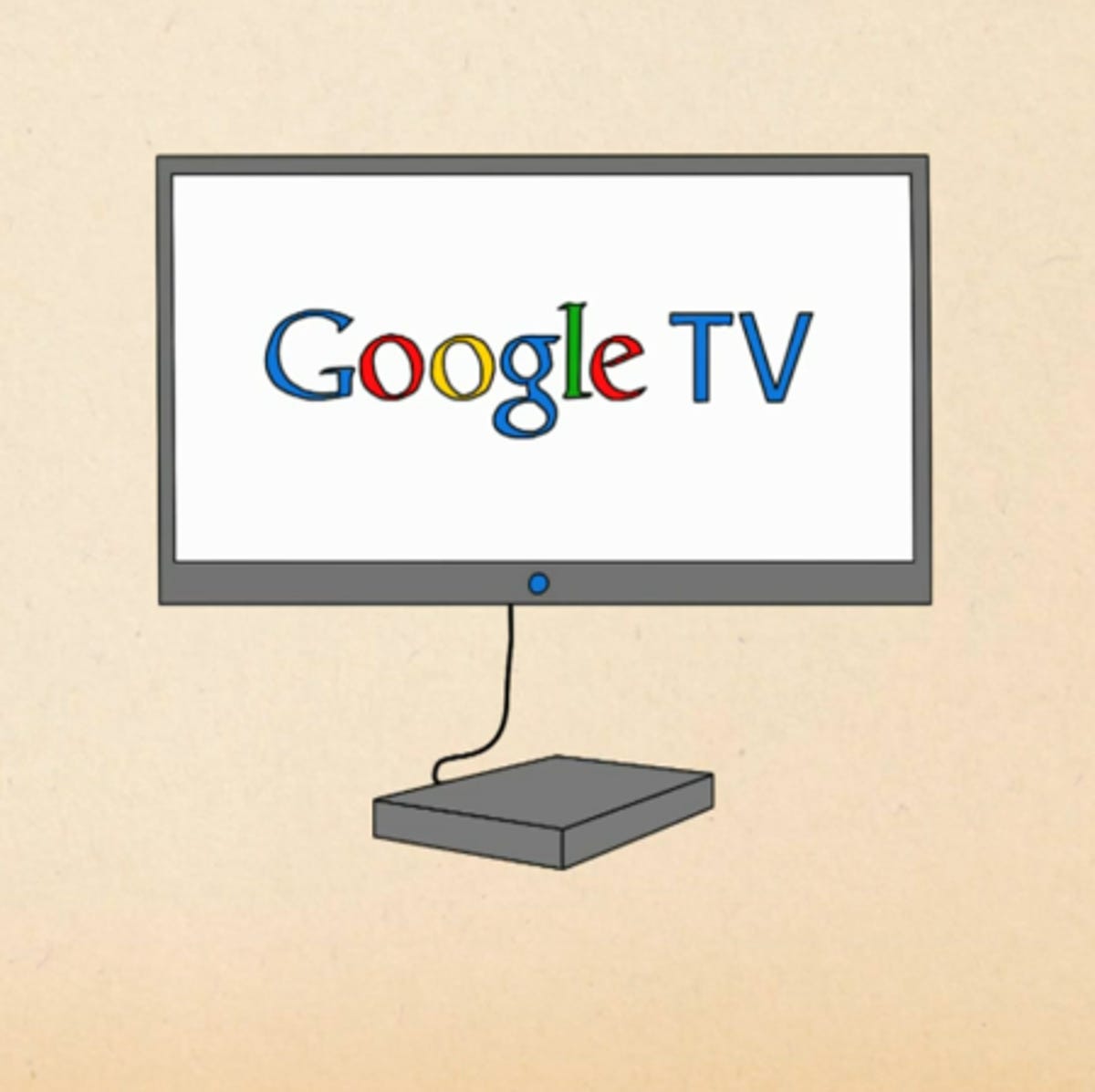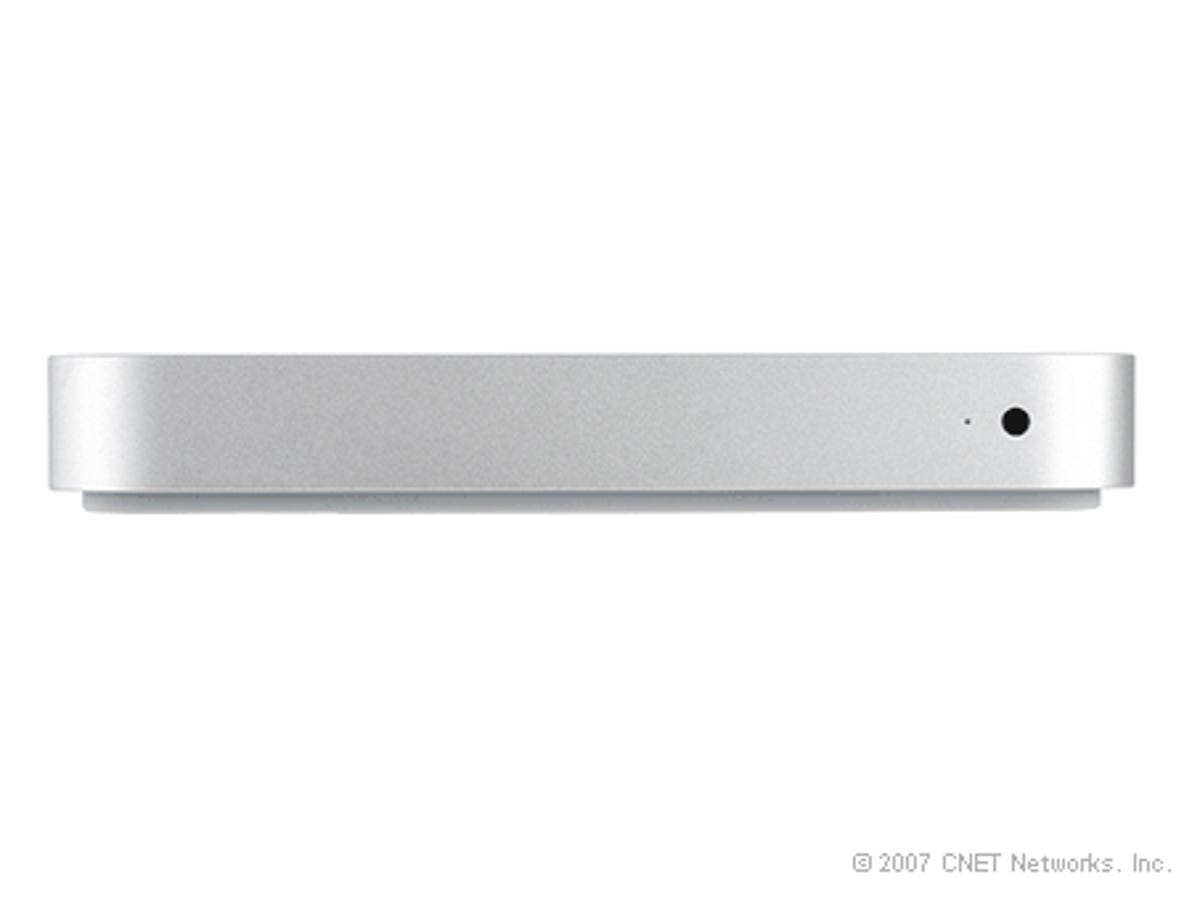Web TV gadgets through the ages (images)
Following the unveiling of Google TV, we take a look at where Internet-enabled television has been in the past few years.

Google tunes its channel to TVs
Google this week unveiled Google TV, a new platform for TV sets that's built off of its Android operating system. Its promise is that it will more deeply integrate the Web with TV programming, as well as offer users a hassle-free way to swap between watching programming on regular TV channels, and on video content sites like Hulu and YouTube. All without requiring those destination sites to change how their site is coded or laid out.
As a product, it will come in three forms: built into TV software, as a standalone pass-through box, and as a software enhancement to existing set-top cable boxes.
Of course, those with long memories will know that this is not the first such endeavor. Many companies, large and small, have come ahead of Google in trying to blend the Internet with that TV set that's in your living room. Let's take a look back to see what's come before.
WebTV
Web TV, which later became MSN TV was basically a product line of cheap computers with a monthly access fee through an Internet service provider.
They weren't the best computers, nor did consumers end up buying into the idea of paying a monthly service fee for a device they could only use on their televisions. My, how times have changed.
Sega Dreamcast
Sega's Dreamcast video game system came with a 56k modem, which could later be upgraded with a broadband adapter. Its Web browser application, which ran from a disc, was pretty marvel at the time. Sure, it wasn't that fast, but when paired with a mouse and keyboard, you could legitimately surf the Web from your couch, sans computer. </>
AOL TV
AOL TV was designed to be a WebTV killer, but it failed to even get off the ground. Like Google TV, it promised to let users do Web related activities while continuing to watch TV in the background. Other solutions at the time required switching inputs.
Intel Viiv (platform)
Intel's ViiV is probably not the best example on this list, since it was more of a full-on marketing initiative than a focused, and understandable concept to consumers. It essentially tied together Intel's hardware with a TV tuner and a build of Windows Media Center. The idea though, was to get people using their computer in the living room. Sound familiar?
Beyond the hype, owners of ViiV-branded PCs got a few extra perks, like access to TV shows like "Welcome Back, Kotter," and being able to eyeball NFL stats while watching the game on a real TV channel.
Sony's Bravia Internet Link
Sony's Bravia Internet Link is a set-top box that streams video from YouTube and Amazon's Video On Demand service, as well as offering a widget page powered by Yahoo with the weather, traffic, and news clips.
It only works with Sony's Bravia TVs, though when hooked up, is fully integrated into the TV's UI.
Sony PlayStation 3
Sure Sony's PlayStation 3 is a gaming console, but it also came out sporting a Web browser. In fact, when Sony first unveiled the PS3, it was promoting it as a computer replacement. Sites like YouTube.com made special versions for PS3 users, so they could watch videos in their living rooms.
Worth noting is that Sony this year released a PS3 companion product in Japan called Torne, which lets users watch TV through their PS3, as well as use the game console's storage as a DVR. No word on whether that's ever making it stateside.
Nintendo Wii (w/Opera browser)
The Wii did not ship with a Web browser, but had one available in short order from Opera. Eventually, this software sported Adobe Flash Lite and support for USB keyboards. Nintendo also managed to implement an on-screen keyboard for text input, which surprisingly didn't suck.
AMD LIVE! Home Cinema products
Like Intel's ViiV, AMD's LIVE! platform (which was unfortunately pronounced the same way as ViiV), was a mishmash of hardware, software and marketing. More importantly though, it brought a grouping of Web software to Live!-ready PCs including 25GB of online storage, an On Demand TV recording app by Orb, and a kid-centric Web browser called KidRocket.
More importantly, unlike ViiV, AMD's LIVE! platform is still around.

Apple TV
The AppleTV is considered by many to be one of Apple's misfires in recent years. The device, which is currently listed in Apple's iPod section, streams media from local computers, a built-in hard drive, and the Web. It can grab photos from Flickr, podcasts, Internet radio, and videos from YouTube. It's also deeply connected to Apple's iTunes Store, allowing users to purchase audio and video content straight off the device.
Yahoo Connected TVs
Yahoo's Connected TV software comes pre-installed on TVs from four different hardware makers, though not on any set-top boxes short of TiVo, where there are weather and traffic apps.
Its widgets pop up on the side of your TV, allowing you to use most of their features without obscuring all of what you're watching. However, short of the video on demand apps like Netflix and Amazon, there is little in the way of how these apps can interact with whatever programming is going on in the background.
Roku
Roku was the first to come out with hardware that could stream Netflix without a dedicated computer. Now a common feature, this Linux-powered device was a trailblazer.
It's since gone on to add support for Pandora, Facebook, Amazon Video on Demand and handful of other media sites.
Panasonic's VieraCast
Available on both PCs and Blu-ray players, Panasonic's VieraCast technology offered a way to stream Internet content straight to the TV. Included were widgets that let you check the weather, watch YouTube videos, rent videos from Amazon, and anything else Panasonic had coded in as applications.
The latest update to the VieraCast platform includes Skype video calls, which will require a $170 Webcam add-on.
HP MediaSmart TV
HP's line of MediaSmart TVs, which have since been discontinued, added media streaming capabilities to TV sets. These could pick up on other computers on your network, including those running Windows Media Center, and ferry over content without users having to plug anything in.
Netgear Digital Entertainer Live player
A Web video streamer that looks just like one of Netgear's routers? That's what the Digital Entertainer Live turned out to be. This small set-top box had its own remote control, and could pull in content from YouTube, Netflix, Hulu, and pay-per-view movies from Roxio's CinemaNow service.
The carryover here to Google TV, is that Netgear included a search tool that would let users parse the Web for video clips, then watch them right from the box. Google TV is promising to do something similar, though using Google's own search index.
WD TV Live
Western Digital's little box that could, which started out as a plug-and-play video playing device, got Net-enabled in late 2009. Besides adding 1080p HD output capability, it tacked on built-in apps for Pandora, Flickr, Live365, and YouTube.
Vudu
Vudu, which is now owned by Wal-Mart, came out with its set-top box in early 2008. It did a handful of things, though its main purpose was to serve up streaming movie rentals. These could also be purchased, and stored on the device.
Along with the movie and TV show service, Vudu came out with an applications interface called Vudu Labs that has media exploring apps like Pandora, Flickr, Picasa, and YouTube. There's also an on-demand TV app that has 120 channels.
Boxee Box
Boxee, the media software, announced its own hardware at this year's CES. The box, which is being made by D-Link, does all the same things as Boxee, including media browsing from sites around the Web, but without the need for a computer.

